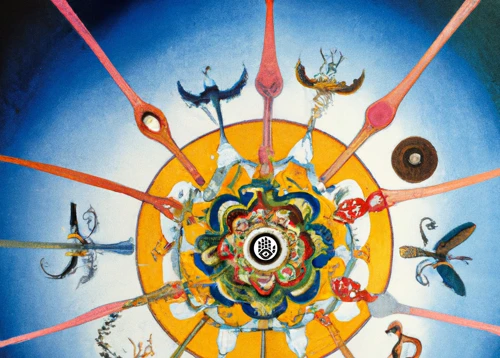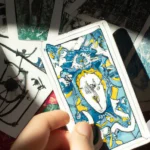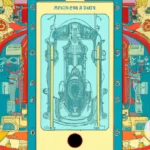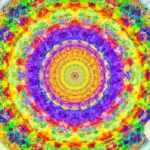Unlocking the depths of our mind is a mysterious endeavor, one that has fascinated humanity for centuries. The Jungian dream analysis provides a unique lens through which we can explore the intricate workings of our subconscious. Dreams have long been seen as a key to understanding our innermost thoughts and desires. In this comprehensive guide, we will delve into the world of Jungian dream analysis, examining the significance of the subconscious mind and its role in shaping our dreams. We will explore the life and work of Carl Jung, the renowned psychologist who developed this approach, as well as the basic principles that underpin his methodology. By following the step-by-step process of Jungian dream analysis, we can unlock the hidden meanings behind our dreams, decode symbols and archetypes, and gain valuable insights into our psyche. We will discuss different types of dreams, common dream symbols, and the benefits of Jungian dream analysis in our daily lives. Get ready to embark on a journey of self-discovery and uncover the depths of your subconscious mind.
Understanding the Subconscious

The world of the subconscious is a realm full of enchantment and mystery. It is the hidden part of our mind that holds our deepest desires, fears, and emotions. Our dreams serve as a window into this enigmatic world, offering glimpses of our subconscious thoughts and experiences. Understanding the subconscious requires delving into the significance of dreams and the role they play in our lives. Dreams are not just random images and events that occur during sleep; they are symbolic representations of our innermost thoughts and feelings. They can provide valuable insights into unresolved conflicts, unfulfilled desires, and even potential future events. Carl Jung, the renowned psychologist, believed that dreams were a manifestation of the collective unconscious, a shared pool of knowledge and wisdom that exists within all of us. By analyzing our dreams, we can gain a deeper understanding of ourselves and unlock hidden aspects of our psyche. So, let us journey into the depths of our subconscious and discover the secrets that lie within.
The Step of Understanding Subconscious:
1. The Role of Dreams
2. The Significance of Subconscious Mind
The Role of Dreams
Dreams serve as a gateway to the unconscious, allowing us to tap into our deepest thoughts, emotions, and desires. They often contain symbolic imagery that reflects our innermost struggles and aspirations. Dreams can provide insights into unresolved issues, subconscious fears, and even offer guidance for our waking lives. For example, a dream of a scorpion sting can symbolize hidden threats or feelings of hurt, while slugs in a dream may represent a sense of sluggishness or a need to slow down and reflect. By exploring and analyzing our dreams, we can gain a deeper understanding of ourselves and navigate the complexities of our subconscious mind.
The Significance of the Subconscious Mind
The subconscious mind holds immense significance in our lives, influencing our thoughts, emotions, and behaviors in ways we may not even be aware of. It is a reservoir of memories, experiences, and desires that shape our perceptions and motivations. While the conscious mind operates on a rational and logical level, the subconscious is where deeper emotions, instincts, and intuitions reside. Our dreams, which emerge from the depths of the subconscious, offer a unique glimpse into this hidden realm. They provide a channel through which we can tap into our true selves, uncovering repressed emotions, unresolved conflicts, and unexplored aspects of our psyche. By exploring and understanding the significance of the subconscious mind, we can gain valuable insights into our personal growth, self-discovery, and overall well-being. It is through this understanding that we can unlock the power of our dreams and harness their potential for transformation and healing.
Let’s explore some fascinating dreams that symbolize the significance of the subconscious mind, like the dream of a scorpion sting or the dream of encountering slugs. We will discover the deep meaning behind these experiences and how they relate to the workings of our subconscious mind. We will unravel the spiritual meaning of dreaming about spiders and the insight it provides into the significance of our subconscious mind. Join us on this exploration of the mysteries that lie within.
Who was Carl Jung?
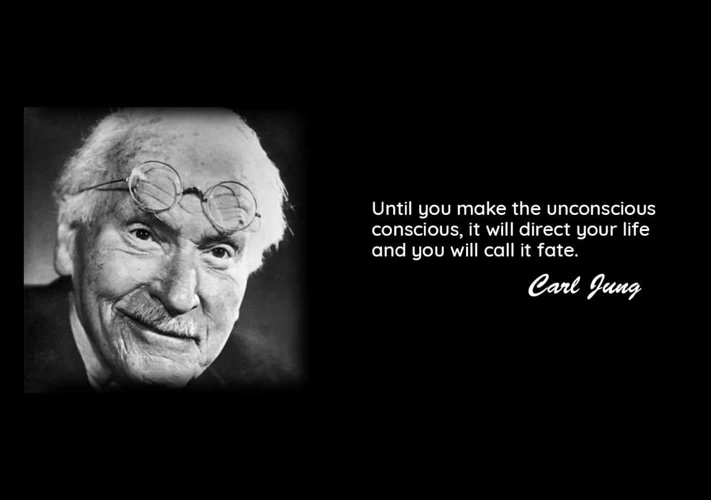
Carl Jung was a Swiss psychiatrist and psychoanalyst who revolutionized the field of psychology with his groundbreaking theories. He was a contemporary of Sigmund Freud and worked closely with him before developing his own unique approach to understanding the human mind. Jung believed in the power of the subconscious and explored the depths of the collective unconscious, a shared reservoir of archetypal symbols and experiences. He emphasized the importance of dreams as a gateway to the subconscious and viewed them as valuable sources of insight and self-discovery. Jung’s work in dream analysis and his exploration of symbolism and archetypes continue to influence modern psychology and greatly contribute to our understanding of the human psyche.
Basic Principles of Jungian Dream Analysis

Jungian dream analysis is built upon a set of basic principles that provide the foundation for understanding the complex symbols and meanings within our dreams. One of the key principles is the concept of symbolism and archetypes. Dreams are filled with symbols that represent deeper, universal meanings beyond their literal interpretation. These symbols tap into the collective unconscious, a realm of shared symbols and ideas that exist across cultures and time. Another fundamental principle is the distinction between the personal and collective unconscious. The personal unconscious is unique to each individual and contains forgotten memories, repressed emotions, and personal experiences. On the other hand, the collective unconscious is the shared reservoir of human experiences and knowledge that is inherited from our ancestors. This collective layer influences our dreams through archetypes, which are universal symbols and patterns that carry profound meaning. Lastly, the individuation process is a crucial principle in Jungian dream analysis. It refers to the journey of self-discovery and integration, where we strive to become whole and balanced individuals by acknowledging and integrating all aspects of ourselves, including the shadow self. By understanding these basic principles, we can begin to unlock the rich symbolism and hidden meanings within our dreams, illuminating our path towards self-understanding and personal growth.
The Basic Principles of Jungian Dream Analysis:
1. Symbolism and Archetypes
2. Personal and Collective Unconscious
3. Individuation Process
Symbolism and Archetypes
In the realm of symbolism and archetypes, we enter a world of deep meaning and universal patterns. Symbols are powerful representations that carry profound significance in the realm of the subconscious. They go beyond their literal interpretation, expressing collective human experiences and emotions. Carl Jung believed that archetypes, which are universal symbols and motifs, are inherited and reside in our collective unconscious. These archetypes, such as the hero, the mother, or the wise old man, are present in various cultures and hold a shared meaning. By exploring the symbolism and archetypes present in our dreams, we can gain insights into our personal and collective unconscious, unlocking a treasure trove of wisdom and self-discovery.
Personal and Collective Unconscious
The are two intriguing concepts in Jungian dream analysis. The personal unconscious refers to the individual’s own reservoir of thoughts, memories, and experiences that have been repressed or forgotten over time. It includes personal symbols and archetypes that are unique to each person. On the other hand, the collective unconscious represents a deeper level of the subconscious mind that is shared by all humans. It contains universal symbols and archetypes that are present across cultures and have been passed down through generations. These archetypes, such as the hero, the trickster, or the wise old man, hold profound meaning and serve as a bridge between the individual and the collective. By exploring both the personal and collective unconscious, we can gain a deeper understanding of ourselves as individuals and connect to the wider tapestry of humanity.
Individuation Process
The individuation process is a key concept in Jungian dream analysis. It refers to the journey of self-discovery and personal growth that occurs when we integrate all aspects of our personality, including the shadow self. This process involves embracing and integrating both our conscious and unconscious elements, allowing for a harmonious and balanced sense of self. Through the interpretation of dreams, we can uncover hidden aspects of ourselves and gain insights into our personal journey of individuation. By acknowledging and working with the symbols and archetypes that arise in our dreams, we can facilitate our own personal growth and move closer to becoming our authentic selves. The individuation process is a lifelong endeavor, and dreams provide us with valuable guidance in this ongoing exploration.
The Steps of Jungian Dream Analysis
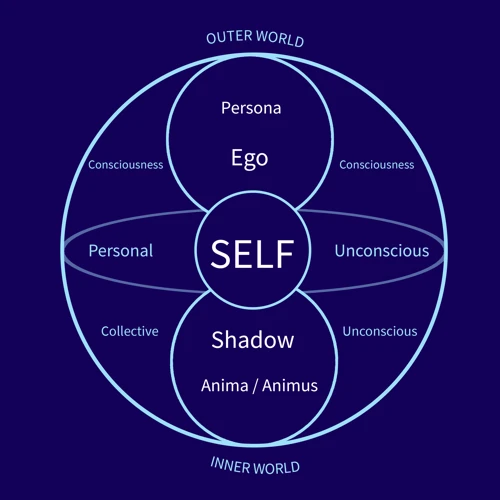
Embarking on the journey of Jungian dream analysis involves a systematic approach to unraveling the hidden meanings within our dreams. These steps provide a roadmap to explore the depths of our unconscious and decode the symbolism that resides within. The first step is to keep a dream journal. By recording our dreams upon waking, we preserve their details and ensure we don’t forget them. This journal becomes a treasure trove of personal symbolism over time. The next step involves decoding symbols and archetypes. Symbols in dreams are deeply personal, and their meanings are intertwined with our own experiences and beliefs. Analyzing their significance helps unlock hidden messages from the subconscious. The third step is examining emotional content. Emotions experienced during dreams offer important clues to understanding their underlying themes. Identifying and exploring these emotions aids in uncovering subconscious patterns and unresolved emotions. By following these steps, we embark on a transformative journey of self-discovery and gain a deeper understanding of the intricate world within our dreams.
The Steps of Jungian Dream Analysis:
1. Keeping a Dream Journal
2. Decoding Symbols and Archetypes
3. Examining Emotional Content
Keeping a Dream Journal
– Make it a habit to keep a dream journal by your bedside to record your dreams as soon as you wake up.
– Write down every detail you can remember, including the setting, characters, and emotions experienced in the dream.
– Use descriptive language to capture the essence of the dream and any important symbols that stood out to you.
– Don’t worry about grammar or coherence; just focus on capturing the essence of the dream.
– Date each entry to track patterns or recurring themes over time.
– Keep your dream journal in a safe and private place to encourage honesty and vulnerability in your reflections.
– Set aside regular time to review your dream journal and look for connections, patterns, and themes that may emerge from your dreams.
– Keeping a dream journal will enhance your dream recall and provide invaluable insights into your subconscious mind.
– Link: /dream-of-scorpion-sting/
Decoding Symbols and Archetypes
Decoding symbols and archetypes is a crucial step in Jungian dream analysis. In order to understand the deeper meanings of our dreams, we must unravel the symbols and archetypes that appear within them. Symbols are images or objects that hold significant meaning to the individual dreamer. They can be personal symbols, unique to the dreamer’s own experiences and associations, or they can be universal symbols that hold collective meaning across cultures and time periods. Archetypes, on the other hand, are universal patterns or themes that exist in the collective unconscious. These archetypal symbols, such as the hero, the mother, or the trickster, have deep-rooted meanings that can provide insight into our psyche. By decoding these symbols and archetypes, we can unveil the hidden messages and messages from our subconscious mind, leading us closer to self-discovery and personal growth.
Examining Emotional Content
Examining the emotional content of our dreams is a crucial step in Jungian dream analysis. Emotions are powerful indicators of our subconscious thoughts and feelings. By paying close attention to the emotions experienced in dreams, we can gain valuable insights into our innermost desires, fears, and unresolved conflicts. It is important to explore not only the emotions felt during the dream but also the lingering emotions upon awakening. Identifying and understanding these emotional reactions can help us uncover hidden aspects of ourselves and bring awareness to our unconscious patterns and motivations. Whether it is fear, joy, anger, or sadness, the emotional content of our dreams serves as a guide in our journey of self-discovery and personal growth.
Interpreting Different Types of Dreams
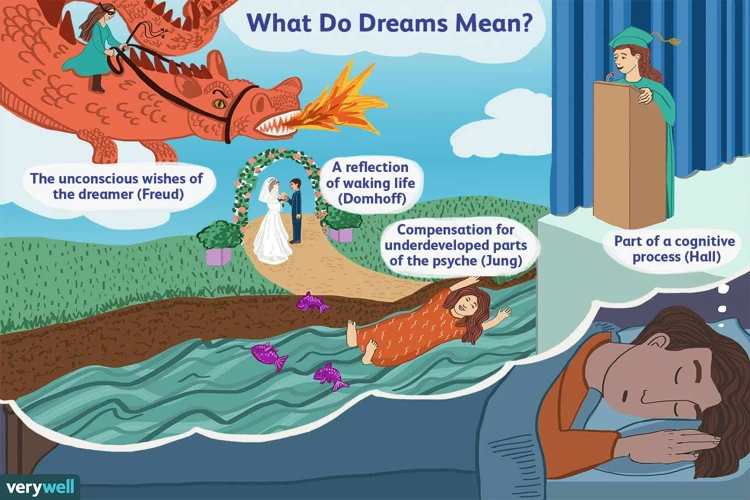
Dreams come in various forms, each carrying its own unique messages and meanings. Interpreting different types of dreams is an essential aspect of Jungian dream analysis. One type of dream that commonly occurs is recurring dreams. These dreams repeat themselves, often highlighting unresolved issues or patterns in our lives that need attention. Another type is nightmares, which can be unsettling but offer an opportunity to confront and work through our fears. Lucid dreams, on the other hand, provide a sense of control and awareness within the dream state, allowing us to actively engage with our subconscious mind. Lastly, there are prophetic dreams that offer glimpses into future events or provide intuitive insights into our lives. Each type of dream brings forth its own symbolism and significance, allowing us to gain valuable insights into our innermost thoughts, emotions, and experiences.
The Step of Interpreting Different Types of Dreams:
– Recurring Dreams
– Nightmares
– Lucid Dreams
– Prophetic Dreams
Recurring Dreams
Recurring dreams are a fascinating phenomenon that can hold deep meaning and symbolism. These dreams occur repeatedly over a period of time, often with similar themes, settings, or characters. They can offer valuable insight into unresolved issues or recurring patterns in our lives. Recurring dreams might signify unfinished business, unacknowledged emotions, or unresolved conflicts that we need to address. By paying attention to the recurring elements in our dreams and exploring their significance, we can gain a better understanding of ourselves and work towards resolving these repetitive patterns. It is essential to keep a dream journal to track and analyze these recurring dreams, allowing us to uncover the hidden messages they hold and bring about personal growth and transformation. Understanding the meaning behind these dreams can provide us with valuable guidance on our journey towards self-discovery.
Nightmares
are unsettling and distressing dreams that evoke intense fear, anxiety, or unease. They often occur during rapid eye movement (REM) sleep and can leave a lingering sense of uneasiness even after waking up. Nightmares can be caused by various factors, such as stress, trauma, or unresolved emotional issues. Jungian dream analysis suggests that nightmares can serve as a powerful tool for inner exploration and personal growth. By delving into the symbols and emotions present in nightmares, we can uncover repressed fears, unresolved traumas, and aspects of ourselves that need attention and healing. Paying attention to the narrative, symbolism, and emotional content of nightmares can provide valuable insights into our subconscious mind and help us process and overcome our deepest fears and anxieties. It is important to approach nightmares with curiosity and an open mind, as they offer an opportunity for self-reflection and inner transformation.
Lucid Dreams
Lucid dreams are a fascinating phenomenon that occurs when we become aware that we are dreaming while still in the dream state. In these dreams, we have a heightened sense of consciousness and can actively participate and influence the events unfolding around us. It is as if we have gained control over our dream world and can shape it according to our desires. Lucid dreams offer a unique opportunity for self-exploration and personal growth. They allow us to confront fears, overcome challenges, and practice new skills in a safe and controlled environment. Engaging in lucid dreaming can also enhance our creativity, problem-solving abilities, and even provide a sense of liberation and empowerment. While achieving lucidity in dreams can be challenging, there are various techniques and practices that can increase the likelihood of experiencing lucid dreams. With practice and determination, one can harness the power of lucid dreaming to unlock new levels of self-awareness and exploration.
Prophetic Dreams
Prophetic dreams have long fascinated and intrigued individuals, as they seem to offer glimpses into the future. These dreams are characterized by their ability to predict events or provide insights that prove to be true in waking life. Prophetic dreams can showcase a wide range of information, from personal experiences to global events. Some individuals believe that these dreams are a form of divine intervention or a connection to a collective consciousness that transcends time. However, it is important to approach prophetic dreams with caution and skepticism, as not all dreams hold predictive qualities. Sometimes, what may appear as a prophetic dream could be a reflection of our own fears, desires, or subconscious thoughts. It is essential to analyze these dreams, considering the context, emotions, and symbols, to discern their potential prophetic nature. By keeping a dream journal and reflecting on these dreams, we can gain a deeper understanding of their significance in our lives.
Common Dream Symbols and Their Meanings

Dreams are like intricate puzzles, full of symbolic images that hold deeper meanings. By decoding these symbols, we can unravel the hidden messages from our subconscious mind. Common dream symbols can vary in interpretation depending on the individual’s personal experiences and cultural background, but there are some universal themes that tend to reoccur. Animals, for example, often represent different aspects of our personality or primal instincts. Lions may embody courage and strength, while snakes can symbolize transformation or hidden fears. Nature, on the other hand, can be a reflection of our emotional state. A serene landscape may indicate inner peace, while a stormy sea could signify turmoil or unease. People in dreams often represent our own qualities or aspects of ourselves that we may be projecting onto others. Objects, such as keys or mirrors, can offer insights into our sense of self and our potential for personal growth. Actions in dreams, such as flying or falling, can convey our desires for freedom or our fears of losing control. By paying attention to these common dream symbols and their meanings, we can unlock the messages hidden within our dreams and gain a deeper understanding of ourselves and our subconscious mind.
Animals
When it comes to dream symbolism, animals play a significant role in conveying messages from our subconscious. Each animal represents different qualities and characteristics that can provide insights into our emotions, instincts, and behaviors. Here are some common animal symbols and their meanings in Jungian dream analysis:
- Cat: Represents independence, intuition, and mystery. It may symbolize the exploration of your own femininity or a desire for freedom.
- Dog: Symbolizes loyalty, protection, and friendship. It may indicate the need for companionship or a desire for unconditional love.
- Snake: Signifies transformation, healing, and sexuality. It can represent a personal growth process or the need to face hidden fears or desires.
- Bird: Represents freedom, aspirations, and spirituality. It may indicate a longing for higher perspectives or aneed to express yourself creatively.
Subscribe to Our Newsletter
Sign up to receive the latest news and updates.
- Elephant: Symbolizes strength, wisdom, and memory. It often represents the subconscious mind and the power it holds within.
Understanding the symbolism of animals in dreams can provide valuable insights into our subconscious desires, fears, and emotions. By paying attention to the specific qualities and behaviors associated with different animals, we can unlock a deeper understanding of ourselves and our inner world. Dream of scorpion sting
Nature
Nature is a rich source of symbolism and meaning in dream analysis. When nature appears in dreams, it often represents our connection to the natural world and our primal instincts. Symbols such as trees, mountains, rivers, and animals can carry profound messages about our own inner landscape. For example, a roaring river may symbolize the powerful flow of emotions, while a blooming flower might signify growth and renewal. Animals in dreams can represent different aspects of ourselves or the qualities we admire or fear. The interpretation of nature symbols in dreams can be highly personal, as their meaning may vary depending on the dreamer’s experiences and associations. Exploring the significance of nature in dreams can offer profound insights into our relationship with the world around us and our own inner journey of self-discovery.
People
In Jungian dream analysis, the presence of people in our dreams holds deep symbolic meaning. Each person we encounter in our dreams represents different aspects of ourselves or significant individuals in our waking life. These dream figures can be familiar faces or complete strangers, and they may embody various qualities or emotions that we need to explore or acknowledge. Jung believed that dreams often use people as symbolic representations to convey messages and insights about our relationships, interactions, and inner conflicts. Paying attention to the characteristics, actions, and emotions of the people in our dreams can provide valuable insights into our own psyche and the dynamics of our waking relationships.
Objects
Objects in dreams have a significant meaning in Jungian dream analysis. Each object symbolizes something specific and represents aspects of our subconscious. The interpretation of objects in dreams requires careful examination and analysis. For example, a key may represent access to knowledge or hidden potential, while a mirror may reflect self-reflection and introspection. Objects in dreams can also carry personal associations and cultural symbolism, so it is crucial to consider the individual’s unique experiences and background when interpreting their meanings. By decoding the symbolism behind objects in dreams, we can gain insights into our subconscious desires, fears, and experiences, helping us on our path of self-discovery and personal growth.
Actions
Actions in dreams hold significant meaning in Jungian dream analysis. Every action we take in a dream holds deeper symbolism and represents a metaphorical message from our subconscious mind. Whether it’s running, flying, or swimming, each action reflects our emotions, desires, and the way we approach challenges in waking life. For example, running in a dream can symbolize the need to escape or flee from a certain situation or emotion. Flying may represent a sense of freedom and liberation. By analyzing the actions in our dreams, we can gain insights into our subconscious motivations and how they manifest in our daily lives. It is through understanding these symbolic actions that we can unravel the profound messages buried within our dreams.
Using Active Imagination in Jungian Dream Analysis

Using active imagination in Jungian dream analysis is an essential technique for engaging with the content of our dreams on a deeper level. Active imagination involves consciously stepping into the dream world and interacting with dream figures and symbols. Through visualization and dialogue, we can engage in a dialogue with our unconscious and gain further insights into the messages and meanings of our dreams. This process allows us to actively participate in the unfolding of the dream narrative, bringing about a greater understanding of its significance. By employing active imagination, we can explore different perspectives, uncover underlying emotions, and access hidden aspects of ourselves. It is a powerful tool for self-discovery and transformation, providing a bridge between the conscious and unconscious realms. With active imagination, we can embark on a profound journey of exploration and integration, unlocking the wisdom and guidance held within our dreams.
Benefits of Jungian Dream Analysis
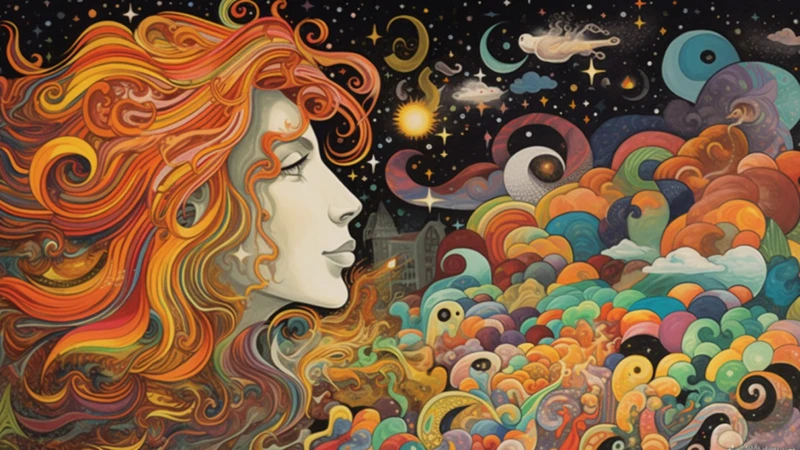
Jungian Dream Analysis offers a multitude of benefits for self-discovery and personal growth. By unraveling the symbolism and meanings hidden within our dreams, we can unlock the secrets of our subconscious and gain valuable insights into our inner world. Through this process, we can embark on a transformative journey of self-discovery, uncovering aspects of ourselves that we may have been unaware of. Additionally, Jungian dream analysis allows us to resolve inner conflicts by bringing to light the underlying emotions and thoughts that contribute to our psychological struggles. By integrating the shadow self – the parts of ourselves that we have repressed or denied – we can achieve a greater sense of wholeness and personal harmony. This approach offers a unique opportunity for deep introspection and self-reflection, leading to personal growth and a heightened sense of self-awareness. So, seize the opportunity to dive into the world of dreams and unlock the transformative power of Jungian dream analysis.
Self-Discovery and Personal Growth
Embarking on the path of Jungian dream analysis can lead to profound self-discovery and personal growth. By exploring the symbolism and meanings behind our dreams, we gain insights into our deepest desires, fears, and aspirations. This process allows us to uncover hidden aspects of ourselves, leading to a greater understanding of who we are and what drives us. Jungian dream analysis encourages us to confront and integrate our shadows, the unconscious parts of our personality that we may have suppressed or ignored. Through this exploration, we can achieve a more integrated and balanced self, fostering personal growth and development. By delving into our dreams and decoding their messages, we can unlock new perspectives, expand our consciousness, and embark on a journey of self-discovery that can positively impact our lives.
Resolving Inner Conflicts
In the realm of Jungian dream analysis, resolving inner conflicts is a vital aspect of self-discovery and personal growth. Dreams often serve as reflections of our deepest fears, anxieties, and unresolved issues. By examining these dreams, we can uncover the root causes of our inner conflicts and gain insight into the steps needed to find resolution. Whether it’s the manifestation of past traumas, conflicting desires, or internal struggles, our dreams provide a space for us to confront and address these conflicts. Through the process of Jungian dream analysis, we can identify patterns, symbols, and archetypes that represent our inner conflicts, allowing us to bring them to the surface and work towards resolution. This inner journey can lead to a greater sense of harmony, self-awareness, and emotional well-being. So, let your dreams guide you towards the resolution of your inner conflicts and embark on a path of true inner peace.
Integration of the Shadow Self
Integration of the Shadow Self is a crucial aspect of Jungian dream analysis. The shadow represents the darker and often repressed aspects of our personality. It is the embodiment of our fears, shameful thoughts, and hidden desires. By acknowledging and integrating the shadow self, we can achieve wholeness and balance in our lives. Dreams provide a powerful platform for exploring and understanding the shadow self. Through dream analysis, we can identify the presence of the shadow in our dreams and uncover the hidden parts of ourselves that we may be avoiding or suppressing. By embracing and integrating these shadow elements into our consciousness, we pave the way for personal growth and self-acceptance. It is a transformative process that allows us to embrace our complete selves, both the light and the dark, and find harmony within.
Comparing Jungian Dream Analysis with Other Approaches
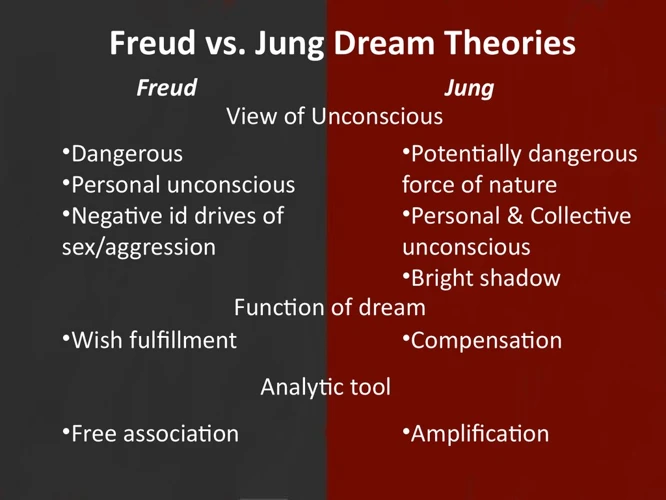
When it comes to analyzing dreams, there are various approaches and theories, each offering unique perspectives on the meaning and interpretation of these enigmatic experiences. One of the most well-known and influential approaches is Jungian dream analysis, developed by Carl Jung. What sets Jungian dream analysis apart from other approaches is its emphasis on the symbolism and archetypes present in dreams. Jung believed that dreams were a direct expression of the collective unconscious, representing universal patterns and themes that are shared by all individuals. In contrast, Sigmund Freud’s psychoanalytic interpretation of dreams focused more on repressed desires and hidden sexual symbols. Modern cognitive approaches, on the other hand, tend to view dreams as a product of neural activity and cognitive processes. While each approach offers valuable insights, Jungian dream analysis provides a holistic understanding of dreams, taking into account their deeper symbolic meanings and connections to the collective human experience.
Sigmund Freud’s Psychoanalytic Interpretation
Sigmund Freud’s psychoanalytic interpretation offers a different perspective on dream analysis compared to Carl Jung’s approach. Freud believed that dreams were a reflection of repressed desires and unconscious conflicts. According to Freud, the content of dreams is heavily influenced by sexual and aggressive instincts, and their interpretation involves uncovering hidden meanings related to these instincts. Freud introduced concepts such as the id, ego, and superego to explain the underlying motives behind dream symbolism. His approach focused on the analysis of dream content and the exploration of the individual’s childhood experiences and repressed memories. While there are similarities between Freud and Jung’s theories, Freud’s psychoanalytic interpretation places greater emphasis on the sexual and aggressive aspects of the subconscious mind.
Modern Cognitive Approaches
In the realm of dream analysis, modern cognitive approaches offer a different perspective compared to the Jungian framework. These approaches focus on understanding dreams through the lens of cognition and neuroscience. Instead of delving into the symbolic meanings or archetypal elements of dreams, modern cognitive approaches seek to unravel the cognitive processes involved in dreaming. These approaches explore how our thoughts, memories, and emotions intertwine during dream experiences. They emphasize the role of brain activity and neural networks in shaping our dreams. By studying the cognitive aspects of dreaming, researchers aim to shed light on the functions and mechanisms behind this phenomenon. While modern cognitive approaches provide valuable insights into the scientific understanding of dreams, they differ from Jungian dream analysis in their emphasis on psychology and symbolism.
Applying Jungian Dream Analysis in Daily Life
Applying Jungian dream analysis in our daily lives can be a transformative practice. It allows us to harness the power of our dreams and apply their insights to our waking reality. By reflecting on the symbols and insights revealed in our dreams, we can gain a deeper understanding of ourselves and the challenges we face. This self-awareness can guide us in making decisions, solving problems, and navigating relationships. Jungian dream analysis encourages us to explore the connections between our dreams and our daily experiences, recognizing that the unconscious mind speaks to us through symbols and archetypes. By incorporating our dream wisdom into our daily lives, we can tap into our authentic selves and lead more fulfilling and meaningful lives. So, let us embrace the gifts that our dreams offer and embark on a journey of self-discovery and personal growth.
Reflecting on Dream Symbols and Insights
When it comes to reflecting on dream symbols and insights, it is essential to take a closer look at the various symbols and messages that appear in your dreams. Dreams are often filled with rich symbolism that can offer profound insights into your subconscious mind. By examining these symbols and their meanings, you can gain a deeper understanding of your inner thoughts, emotions, and desires. Keep a dream journal and record the symbols that stand out to you in your dreams. Consider the context and emotions surrounding these symbols, as they can provide valuable clues to their significance. Take the time to reflect on these symbols and their potential connections to your waking life. By engaging in this process of reflection and introspection, you can uncover hidden meanings and gain valuable insights that can aid in personal growth and self-discovery. So, dive into the world of dream symbols and let them guide you on your journey of understanding and transformation.
Using Dreams for Problem Solving
Dreams have the potential to serve as powerful tools for problem-solving. When we are faced with challenges or dilemmas in our waking lives, our subconscious mind continues to work on them even while we sleep. By paying attention to the messages and symbols presented in our dreams, we can gain valuable insights and solutions to our problems. Dreams often present alternative perspectives, allowing us to view our problems from different angles and uncover creative solutions that may not have been apparent to us while awake. By actively engaging with and reflecting on our dreams, we can tap into the wisdom of our subconscious mind and harness its problem-solving capabilities. So, the next time you find yourself grappling with a difficult situation, remember to pay attention to your dreams – they may hold the key to unlocking the answers you seek.
Conclusion
In conclusion, the Jungian dream analysis offers a profound and transformative approach to understanding our subconscious mind and unlocking the hidden depths of our psyche. By exploring the symbolism and archetypes present in our dreams, we can gain valuable insights into our personal and collective unconscious. Through the process of individuation, we can embark on a journey of self-discovery and personal growth. Jungian dream analysis allows us to decode the messages and meanings behind our dreams, helping us resolve inner conflicts, integrate our shadow self, and awaken to our true potential. While other approaches like Sigmund Freud’s psychoanalytic interpretation and modern cognitive approaches have their merits, the Jungian perspective provides a holistic and profound understanding of the human psyche. By applying Jungian dream analysis in our daily lives, we can use dreams as a tool for reflection, problem-solving, and personal development. So, embrace the power of dreams and embark on a lifelong journey of self-exploration and enlightenment.
Frequently Asked Questions
What is the purpose of dreams?
Dreams serve multiple purposes, including processing emotions, consolidating memories, problem-solving, and providing insight into our subconscious.
Can dreams be analyzed and interpreted?
Yes, dreams can be analyzed and interpreted through various methods such as Jungian dream analysis, symbolism, and personal associations.
What is the significance of the subconscious mind?
The subconscious mind holds our deepest thoughts, memories, and emotions. It influences our behavior, beliefs, and desires, often beyond our conscious awareness.
Who was Carl Jung?
Carl Jung was a Swiss psychiatrist and psychoanalyst who developed the concept of the collective unconscious and contributed significantly to dream analysis and symbolism.
What are archetypes in dreams?
Archetypes are universal symbols and patterns that are present in the collective unconscious. They represent common human experiences and emotions.
Is dream journaling important for dream analysis?
Yes, keeping a dream journal is crucial for recording and analyzing dreams. It helps identify patterns, symbols, and recurring themes for further exploration.
How do emotions play a role in dream analysis?
Emotions in dreams provide valuable insights into our subconscious feelings and unresolved issues. Analyzing the emotional content helps understand underlying conflicts and desires.
What are recurring dreams, and why do we have them?
Recurring dreams are dreams that repeat over time and often carry significant personal meanings or unresolved emotions. They reflect repeated themes or unresolved issues in our lives.
Can dreams have a prophetic meaning?
Some dreams may symbolically represent future events or provide intuitive insights about possible outcomes, although the interpretation of prophetic dreams can vary.
How can Jungian dream analysis contribute to personal growth?
Jungian dream analysis helps individuals gain self-awareness, explore their subconscious mind, resolve inner conflicts, and promote personal growth and integration of their whole selves.

